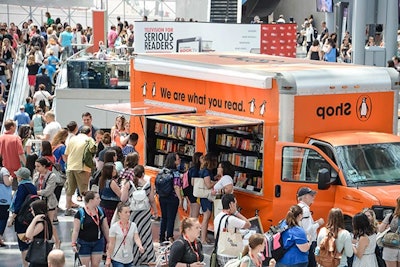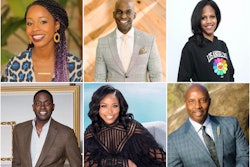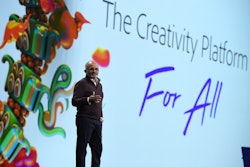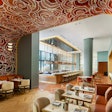
“Diversity is good for business. It’s not about race, gender, ethnicity—it’s about mindset and skill set. We all bring a different dimension and voice to the table. When you have a dinner party and you want to have an interesting conversation, you invite interesting guests to the table. So imagine your panel. The more variety you have, the livelier your conversation will be.”
Shelley Zalis, C.E.O, Ipsos OTX, and founder, Ipsos Girls' Lounge, Los Angeles
“What’s the purpose of diversity? It’s not about having different faces on stage; it’s about bringing richer content to the event. So you start with the basic questions: What are our goals? What are our sponsors’ goals? What are our stretch goals? More often than not you are going to want to go outside of your usual pool of speakers to make your event different and to bring in content that is memorable and different from events you are competing with. As planners we have a really cool opportunity to create the environment that we want to see. Music festivals are doing this now. Bonnaroo for example—I think they threw in more hip-hop this year because they are trying to diversify who’s coming to Bonnaroo. Who you see on stage will affect who you see in the audience, and that will open up your reach. It’s a win-win.”
Audrey Gallien, senior associate for events, Catalyst, New York
“Last year at BookCon in 2014 it was pretty bad on Twitter and Facebook; there were some negative reactions, but we were able to correct that. We needed to work directly with publishers to round out panels because the initial lineup wasn’t all that reflective of the books and the people we want to put forward. In the instance of BookCon, we are working with a young and excited audience, and it’s great when people of diverse backgrounds see someone from a similar background up on the main stage talking about their successes. It absolutely enriches the event. But it’s funny—when you are doing diversity right, you almost don’t hear anything because that’s what people expect. If you do it wrong, you hear it very loudly.”
Brien McDonald, show manager, BookCon, New York
“We have to think about our events from the user-experience perspective. What do we want people to go away and remember? So if we focus on who do we want to introduce our event to, what kinds of new customers do we want, and how do we make sure they are comfortable at our event. The Lean Startup is a best-selling book by Eric Reis. He has these huge conferences … and several years ago his conference partner Sarah Milstein made a concerted effort to get diverse speakers. She started advertising very early, putting the word out through networks and saying, ‘We want you to speak if you’ve never spoken at a conference, if you bring a different voice, a different lens, a different perspective.’ And over the course of a few short years they significantly increased the diversity of their speakers, which then also increased the diversity of their attendees. So just as we know from all the research on role models in schools, the same thing is true at a conference—no one likes to go anywhere and be an only. No one wants to go to a conference and have a bunch of people who don’t look like you, who don’t share your experience tell you what you should do and how the world should be.”
Freada Kapor Klein, partner, Kapor Capital, and founder, Level Playing Field Institute, Oakland, California
“It’s where you channel the emails that you send out, who are the organizations that you target. If you want more Asian women, you might want to contact the Asian society and send it through them. I think sometimes organizations don’t go to specific groups because they think, 'Maybe I’ll insult them if I sent it directly to them.' But that’s the only way to let them know it’s geared for all people, by inviting them in. The visual itself is also the issue. If the advertisement has all white people in it, then you cut people off. If they don’t see anybody like them, they don’t come.”
Sandra Sims-Williams, chief diversity officer, Publicis Groupe, Boston
“Our membership and organization now represents 80 countries, and our annual meeting offers simultaneous translations services for 16 different languages. Our members can now tap into our global community and gain advice, resources, and insights from industry leaders located across the globe, versus many years ago when we were more North American-centric. Diversity considerations also impact MDRT’s speaker selection and educational offerings as well. Leadership and committees representing 15 global geographic zones are the organization’s representatives on the ground and ensure their constituencies are fully represented in the content offered at each event, regardless of the location.”
Ray Kopcinski, board chair, Professional Convention Management Association, and senior director, Million Dollar Round Table, Chicago
“About four or five years ago we were programming a very geeky event for creative technology. Unfortunately at that moment in time we had all men and a very good friend of mine called me out on it. So I wrote an open letter to women in the industry saying, 'I need your help.' Since then we’ve gotten much better at getting the gender equality right, but we still have an issue with ethnicity diversity representation. Part of it is our industry still suffers from a lack of diversity, especially at senior levels. And when people come to our events they want to see the most senior people they can see. But the more that we can push, the better off it will be for the entire industry. And I think that’s the case in many industries, not just ours.”
Nancy Hill, president and C.E.O., American Association of Advertising Agencies, New York
“Corporations are consistently talking about how they want to be a place where people want to work. In order to do that you have to represent an environment where people of difference feel welcome. People always know what it feels like to be treated well and what it feels like to be treated poorly. So when you step into any kind of space you want to increase the probability that people feel welcome and attended to, that you want them to be there. You don’t want to walk into a room and of 300 people there are two women or two African-Americans. That sends a message … it seems like the organization is not interested in people like me.”
Audra Bohannon, senior partner for workforce performance, inclusion and diversity, Korn Ferry, Boston
Disclosure: Gallien is co-host of GatherGeeks, a podcast produced by BizBash



















